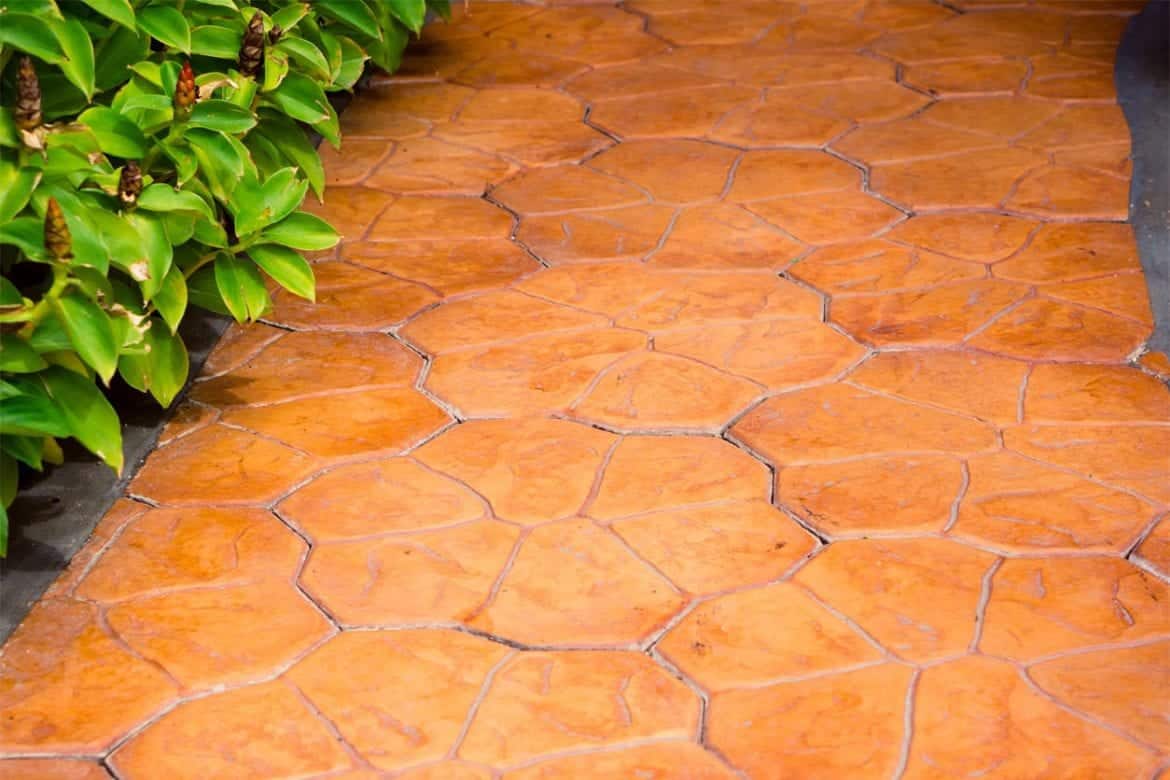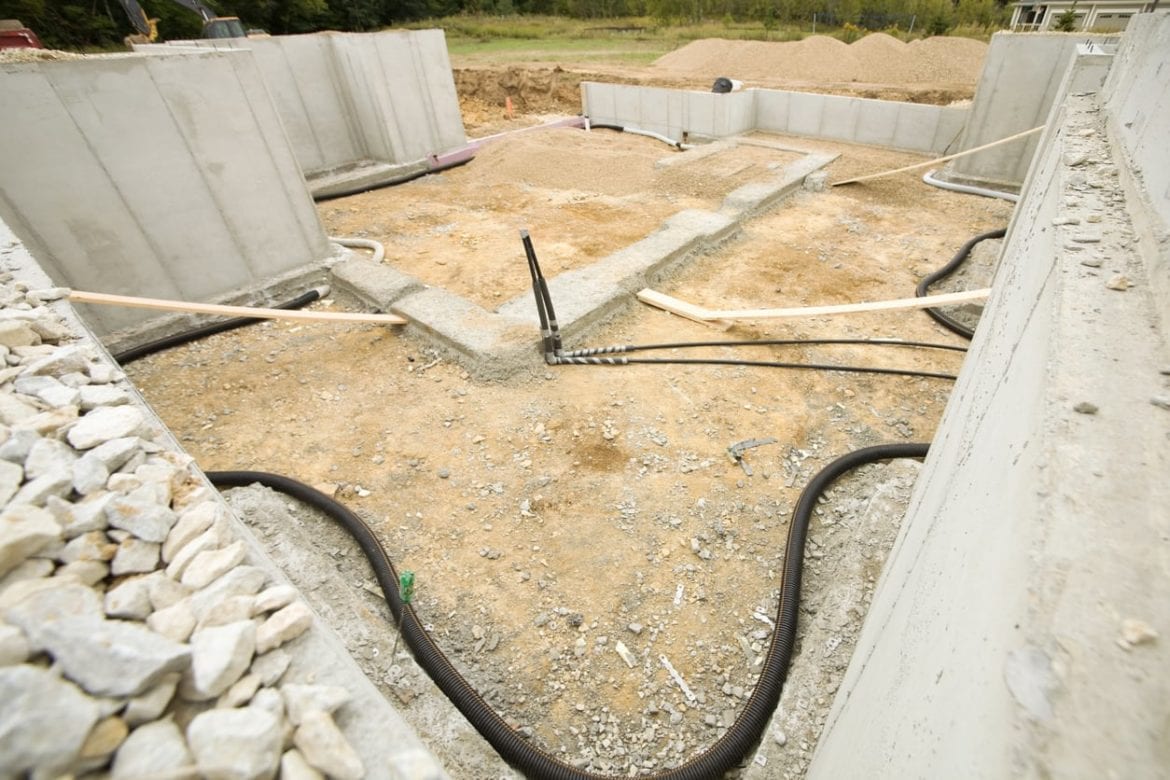Polished concrete is one of the newer choices many people make for their concrete surfaces. Concrete naturally is a very porous material made from the mixing of water, Portland cement, and some sort of aggregate, such as stones, gravel, or sand. The mixture, when properly completed, results in the formation of concrete that features a large amount of tiny pores and hairline cracks that extend, web-like, throughout the concrete. While these pores and cracks do not overly inhibit the concrete’s strength, they can be the cause of future damage.
To make sure your concrete is as strong as it possibly can be, as well as protected from potential future harm, you need to make sure you seal your concrete with the appropriate concrete sealer. However, the situation changes slightly if you decide to polish your concrete. Polishing concrete is a choice many people make because it grinds down the surface of the concrete to transform the pockmarked natural surface into a smooth, shiny expanse of concrete. These types of floors are typically found in large retail stores, such as Home Depot, as well as a number of other venues.
While the polishing process is as simple as renting a concrete grinder and following the instructions from there on, there is a crucial step that many people skip. Skipping this step, of course, can result in absolute disaster for the concrete, leading to excessive cracking, crumbling, and general degradation that can necessitate costly repairs.
Before you can polish concrete, you need to increase the strength and density of the slab. Polishing pushes the concrete’s structural integrity to the brink, which can be problematic for untreated concrete. In order to ensure a successful concrete polishing process, you need to treat the concrete slab with a concrete densifier. The best choice for this project would be a lithium silicate/siliconate. These types of sealer are the strongest densifiers on the market, featuring deep penetration and comprehensive chemical reactions that create more calcium silicate hydrate (or CSH) that gives concrete its noted strength. Once the lithium silicate sealer has been properly applied, the concrete can be polished without fear of damage caused by untreated concrete.
The 2500 Medium Gloss sealer manufactured by SS Specialties is a medium-grade acrylic sealer that offers such benefits as UV resistance, water resistance, and non-yellowing properties. The sealer itself functions much like all other acrylic sealers: its larger particles of acrylic sealant will not pass through the surface pores of the concrete, rather pooling on top of the concrete to be spread out during the application process. Once properly applied, the sealer will bond to the surface of the concrete substrate to prevent the incursion of water, salts, and other potential harms.
According to their website, “SS Supreme 2500 Plus is a medium gloss, UV Resistant acrylic copolymer concrete sealer intended for all types of concrete both indoor and outdoor. SS Supreme 2500 Plus Medium Gloss offers improved resistance to rain, the sun, freezing temperatures, stains, and other pollutants that sometimes can be hazardous to concrete. With substrate wetting agents and anti-foaming additives included in this formulation, SS Supreme 2500 Plus Medium Gloss provides superior adhesion to properly prepared concrete. Applying SS Supreme 2500 Plus Medium Gloss to exposed aggregate will also help to eliminate loose pebbles and premature wear. SS Supreme 2500 Plus Medium Gloss can be considered an ultimate multi-use concrete sealer, including a Cure-N-Seal.”
The biggest potential drawback to the SS Specialties line of sealers is that they are solvent-based sealers, meaning they may not be legal in your state due to their high volatile organic contents. Similarly, care must be taken during the application process as the fumes released by solvent-based sealers during application can be harmful to your health.
As the areas of our homes that are probably the most vulnerable to damage, basements require a little more care and consideration than many other parts of our houses. Water damage typically will not plague a home, even on the ground floor. However, since basements are actually located underground, they are at a higher risk of damage from the elements, especially water damage.
Water damage typically occurs from flooding. While flooding can be a surprise, such as from flash floods or natural disasters like hurricanes, the flooding that can regularly plague basements generally builds up over time. Areas near rivers, lakes, oceans, and other bodies of water have high water tables. This just means there is a large amount of water pooled beneath the surface of the ground. When the water table is high, there is a greater chance of flooding because water from rain cannot sink into the earth to as great of an extent as in places with a low water table.
Basements in areas with high hydrostatic pressure, which is when the water table is high, are prone to water damage. While concrete seems strong and impervious to water flowing through it, it is actually a porous material. Its mixing process results in a large number of tiny air pockets that allow water and moisture to pass through the material. While trace amounts of moisture are not a problem, water can physically pass through the concrete and drip through the walls, leading to mold and mildew build-up, as well as damaging your home and possessions.
The best way to prevent this type of damage is by using a concrete sealer. If you use an acrylic sealer, the water will just seep through and push the sealer off the surface from within the material. The acrylic sealer will bubble and flake and water will still drip into your basement. The better choice is a penetrating sealer. These sealers will penetrate past the surface of the concrete to react chemically within the material. The chemical reaction not only increases the concrete’s density and strength, but it also fills in the pores and hairline cracks that allow the uninhibited passage of moisture into the concrete. Without a free network offering passage throughout the concrete, the water will have nowhere to go, backed up outside of the surface and barred from entrance. Only then will your concrete’s safety be improved and protection achieved.
When searching for a concrete sealer online, you can often be overwhelmed by the sheer amount of possible choices available to you. To make matters worse, companies, manufacturers, and distributors often do not explain which situations and types of concrete their sealers are appropriate for. For instance, if you do not do enough independent research, you could easily purchase an acrylic sealer without realizing that it is the wrong choice for a concrete basement floor – the manufacturer and/or the distributor will not give you this information, instead marketing their product in general terms designed to encourage the consumer to purchase their product.
There are two main varieties of concrete sealer types. The first are the penetrating sealers. These tend to be sodium silicates, lithium silicates, or lithium silicate/siliconates that are designed to penetrate past the surface pores natural to all concrete. Their small particles of sealant can seep through the microscopic holes dotting the surface of the concrete, which allows the sealant to enter the vast network of hairline cracks and microscopic pores that extend throughout the concrete. Once inside the concrete, these sealant particles react chemically with minerals already present in the slab, leading to the creation of more calcium silicate hydrate (or CSH), which is the naturally occurring mineral in concrete that gives it its strength. Because these types of sealers increase the concrete’s strength for life, they are often referred to as concrete densifiers – not only do they densify, they also block the passage of water, salts, and other potential harms through the concrete.
The other broad category of concrete sealer is the surface sealer. These topical level sealers contain large particles of sealant that cannot fit past the surface pores of the concrete. Instead, the solutions pool on the surface of the concrete to be spread out evenly during application. These products range from acrylic sealers to epoxies, urethanes, and polyaspartics, all of which are extremely different. However, they all bond to the surface of the concrete to lock out water and minerals from entering the material, much like a raincoat locks out water while you’re wearing it. For a more in-depth discussion about the various products mentioned here, please refer to other our other articles that we constantly update and add to for your convenience.
With the excessive number of companies manufacturing and distributing concrete sealers continuing to grow, it is important to eradicate some of the more pervasive myths. Most of these myths have to do with the concrete sealers and their propensity to repel or completely protect against water. Waterproofing concrete sealers are hard to find – typically the only types of sealers that can truly waterproof are lithium silicate/siliconate products that are not exactly everywhere on the market as they are more expensive to produce. Most companies simply content themselves to label their lesser (and less expensive to produce) products as waterproofers, when they will offer only a level of water resistance at best.
We now turn to examine the concrete sealers that claim to repel water. Water repellents are everywhere on the market, and many readers have been contacting me to ask whether or not products that claim to be water repellents actually are. In other words, does a water repellent truly repel water?
The answer is yes, they do. While there are many products that are developed and sold by unscrupulous companies who simply want to make money by offering a worse product for less money, there are a umber of companies that produce quality water repellent products. The key to see if your product is water repellent can, unfortunately, only happen after you have purchased and applied your concrete sealer. If you apply the sealer and any water that drips onto the surface of the concrete after the application and drying process has properly completed beads and drips off the concrete, then the product you used is indeed a water repellent sealers.
Water repellent sealers can be acrylics, but they are most often silane/siloxanes. Nearly all silane/siloxanes are water repellent, and they should be more or less bought with confidence. These products work by creating a hydrophobic barrier that locks out water with the particles of silane (that penetrate) and the particles of siloxane (that remain on the surface). This process creates the hydrophobic barrier that does not allow water to penetrate into the concrete, nor does it allow the water to even sit on the concrete surface, resulting in the beading and dripping off. Of course, water repellents are not waterproofers, and water will eventually seep into the concrete in minute amounts with the presence of enough water. However, as long as there is not standing water for a significant period of time, silane/siloxanes will offer comprehensive water repellent protection for your concrete surfaces.





